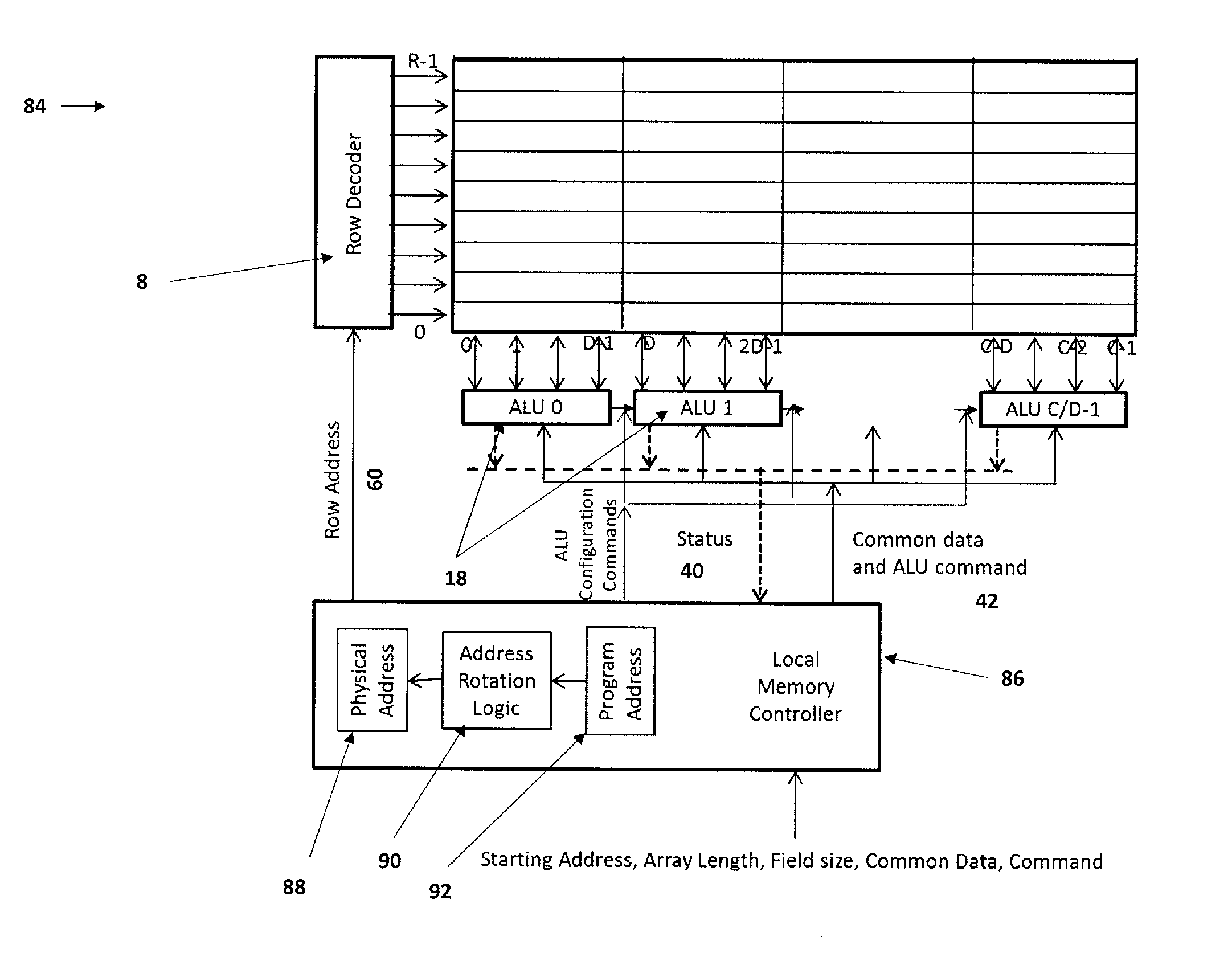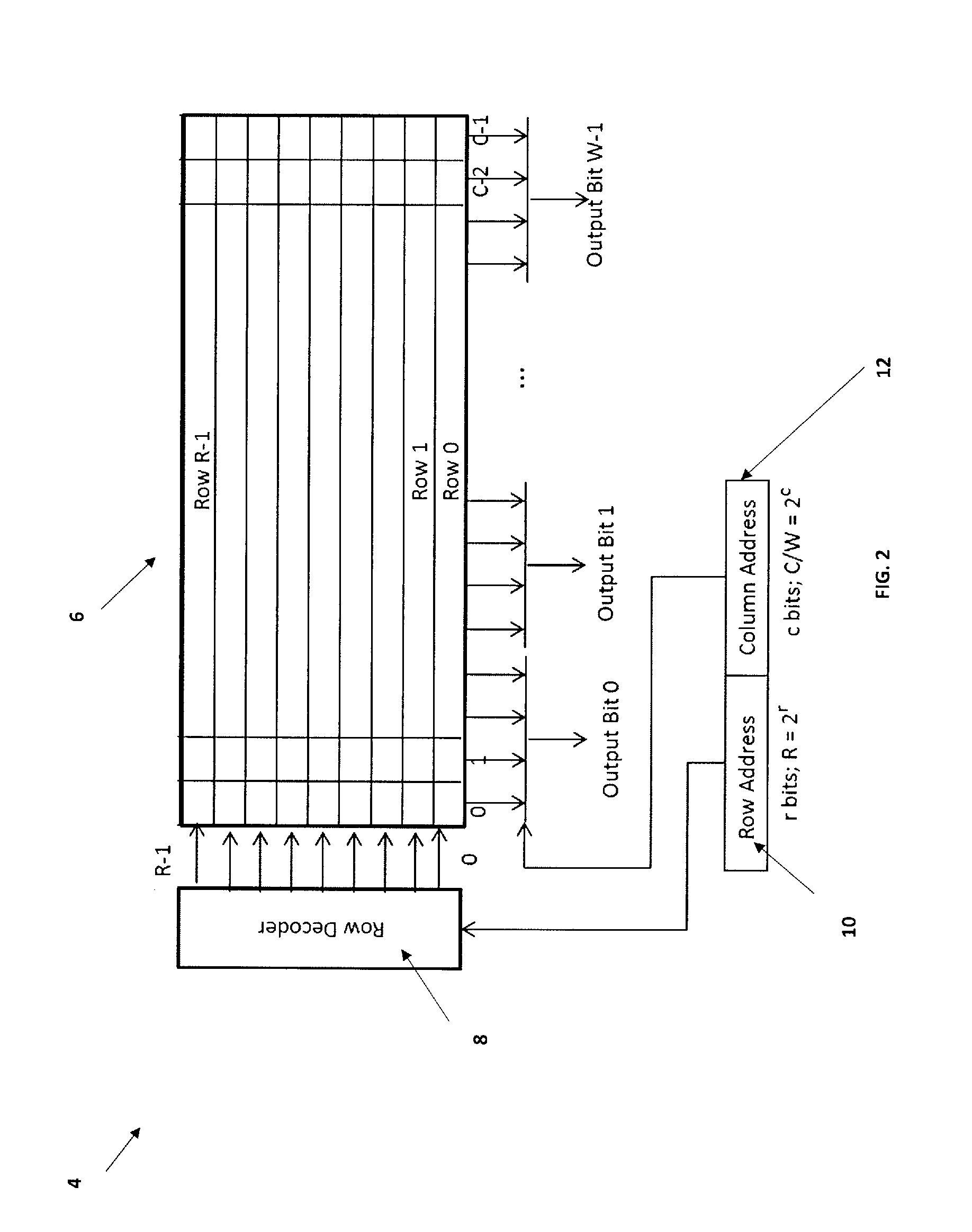Reducing memory accesses for enhanced in-memory parallel operations
a technology of parallel operations and memory access, applied in the field of memory storage and retrieval, can solve the problems of excess data reads, small part of the data actually retrieved, and ignored, so as to and reduce program execution time and energy
- Summary
- Abstract
- Description
- Claims
- Application Information
AI Technical Summary
Benefits of technology
Problems solved by technology
Method used
Image
Examples
Embodiment Construction
[0018]The invention describes a programmable mechanism whereby the “degree of rotation” of such data can be selected on a per application basis to best balance overall performance. This is done by manipulating in a simple way the addresses presented to the memory to access such data structures. The invention also defines how, for operations such as search, additional energy can be saved by suppressing parts of the access when it is known that they are no longer needed. The “degree of rotation” in such a system refers to the extent in which data for a single field in an array or similar data structure is stored not in consecutive bits in the physical memory but in bits of different rows.
[0019]FIG. 1 diagrams an abstracted view of a typical memory block 2 such as found on a modern DRAM memory chip. There are R rows of C memory bits, for a total of RC bits of memory. It is not uncommon for R and C to each be in the thousands.
[0020]FIG. 2 diagrams the typical use of such a block as a me...
PUM
 Login to View More
Login to View More Abstract
Description
Claims
Application Information
 Login to View More
Login to View More - R&D
- Intellectual Property
- Life Sciences
- Materials
- Tech Scout
- Unparalleled Data Quality
- Higher Quality Content
- 60% Fewer Hallucinations
Browse by: Latest US Patents, China's latest patents, Technical Efficacy Thesaurus, Application Domain, Technology Topic, Popular Technical Reports.
© 2025 PatSnap. All rights reserved.Legal|Privacy policy|Modern Slavery Act Transparency Statement|Sitemap|About US| Contact US: help@patsnap.com



